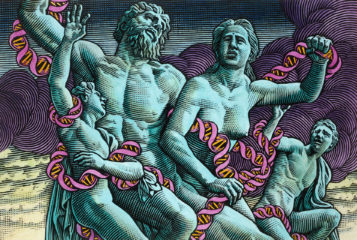The authors of a recent study describing a new way of extracting human embryonic stem cells (ES cells) have been accused of 'hyping' their results. The research, published by US firm Advanced Cell Technology (ACT) in the journal Nature on 24 August, reported the isolation of new ES cell lines using single cells taken from three-day old embryos. As with the technique PGD, the method potentially leaves the embryos intact and able to develop if returned to the womb. However, say critics, the team, headed by ACT medical director Robert Lanza, initially failed to make it clear that all the embryos used in the study were destroyed. There are also fresh concerns that the researchers over-interpreted their results.
Last week, Lanza said that 'what we have done, for the first time, is to actually create human embryonic stem cells without destroying the embryo itself'. The paper's abstract backed up this claim, saying 'the ability to create new stem-cell lines and therapies without destroying embryos would address the ethical concerns of many'. However, the text of the paper itself revealed that none of the 16 embryos used in the study survived. The research involved breaking up the embryos, to obtain 91 cells for the procedure - resulting in just two cell-lines, a much lower efficiency than the authors initially imply. 'So many things about the paper and the way it was presented are unclear', commented German stem cell scientist Hans Scholer.
Nature's press office corrected its press release twice in reaction to the criticisms, and the journal also intends to clarify the original paper. Nature's editor-in-chief, Philip Campbell, says that the journal 'takes responsibility for the problems with the press release, for which I apologise'. But, according to a news article in Nature, Lanza says that he never intended to say more than that he had proved a principle, and that he is surprised by the reaction the paper provoked. He added that PGD, an established procedure, has already shown that removing a single cell from a three-day old embryo does not harm it. 'We knew that, so we took multiple cells from each embryo so as not to be wasteful', he said.
The ACT researchers claim that the new technique could side-step ethical issues - and the American federal funding ban - resulting from the usual need to destroy embryos when creating ES cell-lines. However, US Senator Arlen Specter, who is leading attempts to pass legislation that would expand federal funding of human ES cell research, said that research such as the ACT study made his job 'a lot tougher'. Speaking during a Senate Appropriations, Labor, Health and Human Services Subcommittee hearing last week, Specter said that the 'hype' surrounding the study was harming chances of approving the legislation. 'It's very hard to get Congress to focus on stem cell research', he said adding 'so if you give them any reason not to they brush it off like lint off their jacket'.
Senator Tom Harkin, co-sponsor of the Stem Cell Research Enhancement Act, said that ACT 'should have made it more clear from the beginning that none of the embryos survived', adding that the field of stem cell research had been 'hyped too much'. He also said that even if the new method could be used successfully, 'it will still take years and years for it to produce a substantial number'. But Ronald Green, chair of ACT's ethics advisory board, said he estimates the company could produce 'at least 50 new cell lines every year'. Meanwhile, Kevin Eggan, a stem cell researcher based at Harvard University, US, expressed doubts over the new method because it could result in a delay in returning IVF embryos to the womb, which he said would put 'the treatment of the patient couple at risk'.
Sources and References
-
Sens. Specter, Harkin Say "Hype" Surrounding Nature Study Harms Chances Of Expanding Federal Stem Cell Research Funding
-
'Ethical' stem-cell paper under attack
-
Scientists defend




Leave a Reply
You must be logged in to post a comment.